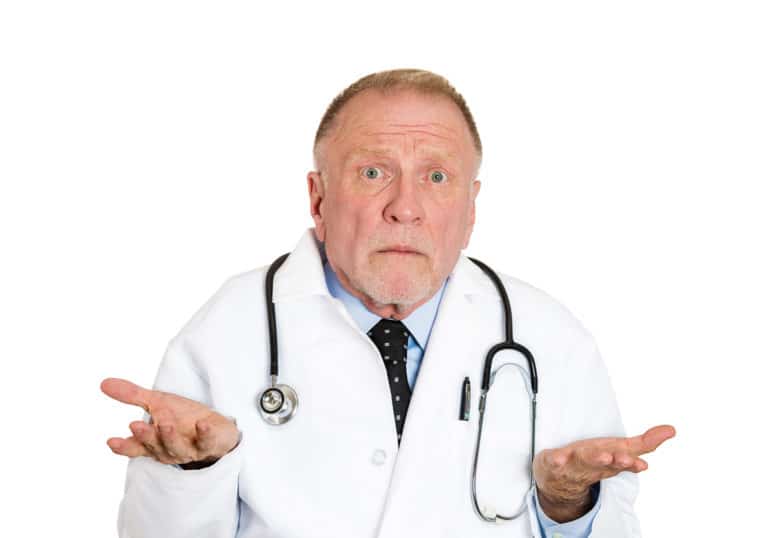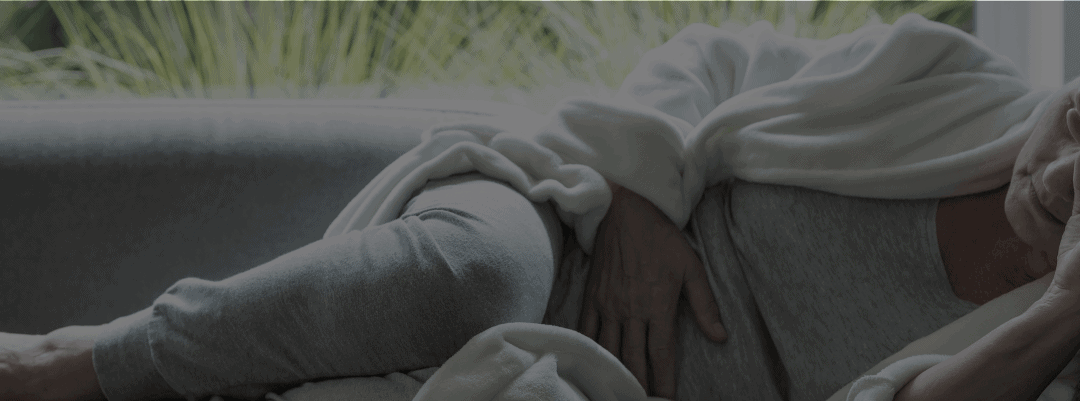Are You Still In Chronic Pain?
HAS YOUR DOCTOR MISSED SOMETHING?I offer four virtual services for pain and chronic stress. Please check out my Services Page for more details.
How come nobody knows what’s wrong with me?
What is a waste of your time, and why?
No one understands chronic pain, why is this?
Are you still in chronic pain? Do you have questions like these? I do, too. For the last 30 years, I’ve have spent endless hours researching and talking with people about the topic of pain. I have found answers and resources that work for me and can work for you.
I’ll review your treatment options for everyday aches and pains as well as your specific chronic pain issues.

Doctors are often confused by chronic pain
Did my doctor miss something?
I’ll explore how doctors often overlook common problems such as trigger points. Trigger points are a poorly understood condition, often confused with muscle strain or fatigue. Trigger points can also be a significant issue in low back pain, iliotibial band syndrome, chronic pain and other challenging issues such as frozen shoulder.
I’ll explain my view of why you are in pain and make sure you understand the solutions I suggest.
As I continue to post articles, I will add more pain-related topics as I go.
What works? What is most useful for persistent pains and injuries?
I’ll review what I consider your best treatment options and point out things that I have found don’t work. I’ll discuss the various treatment methods that may work best for you. These may include physical therapy, chiropractic, massage, acupuncture, and orthopedic surgery, as well as lesser-known treatments for pain such as neurofeedback.
I will share with you many self-help tips, including self-massage, specific exercises, and specific nutritional advice that can put the power of healing into your own hands. I’ll also explore new electronic gizmos such as electric stimulators (ex: TENS), meditation apps, and deep tissue muscle massage.
Why do I hurt? Understand the source of the problem
We all want to know why we hurt. I’ll explore answers to the puzzle of pain and show its relationship to many things that may not seem to be connected. For instance, did you know that chronic pain can relate to insomnia, childhood abuse, or even autoimmune disease?
Stress management is a key ingredient for recovery
Sometimes the source of pain and its solutions can take a while to identify. This period of uncertainty can lead to further stress and feelings of helplessness, despair, and even guilt. When we don’t know why we hurt, it’s helpful—and possible—to learn how to accept the current situation as it is rather than causing more pain through our frustration and judgment.
Viewing your pain condition from a different perspective than self-blame can lead to a road map for a successful, long-lasting recovery. Mindfulness practices are one of the best ways to address this issue. I’ll explore several proven methods for using mindfulness to help you get through this tough time.
There are many persistent myths about the cause of pain
Healthcare providers were also taught that creating perfect symmetry in the body was essential for pain relief and proper function. [2] (2) Eyal Lederman. The fall of the postural–structural–biomechanical model in manual and physical therapies: Exemplified by lower back pain.CPDO Online Journal [website]. March 2010.http://www.cpdo.net/Lederman_The_fall_of_the_postural-structural-biomechanical_model.pdf (accessed January 23, 2020) Both of these guidelines are less important than we initially thought.
Look for many more myth busters in my articles.
Stay tuned for my in-depth articles that explore the origins and fixes to many common issues concerning both acute and chronic pain. I’ll be posting regularly and look forward to your comments and feedback.
If you would like to know more about a specific pain issue, please send me a request through email, social media, or as a comment after one of my articles.
Articles
New Frontiers in the Treatment of Chronic Pain, Part 2, Healing Practices
(The video provides a brief overview; read the article below for a more in-depth understanding.)In Part 1 of this series, I explored the new understanding of pain that has emerged from breakthroughs in neuroscience. Now, in Part 2, we explore the practical application...
New Frontiers in the Treatment of Chronic Pain – Part 1, the Updated Science
(The video provides a brief overview; read the article below for a more in-depth understanding.)Are you suffering from chronic pain?If you're reading this article, you have likely suffered from chronic pain and illness, possibly for years. Your condition may range...

I can’t take the pain anymore – I’m feeling hopeless!
How can I make my chronic pain go away? You have a problem with pain. You’ve seen MDs, physical therapists, chiropractors, massage therapists, acupuncturists, but nothing has helped long term.You keep asking yourself:How can I get relief from my ongoing pain? Why...
Somatic Exercises To Deal With Difficult Emotions and Feelings Without Running Away
[00:00 - 00:15] Introduction and Purpose [00:15 - 00:43] Building Emotional Capacity [00:43 - 01:24] Preparing for Meditation [01:24 - 03:11] Beginning the Body Scan [03:11 - 05:33] Breathing and Focusing Techniques [05:33 - 09:54] Deepening Body Awareness...
How to Be with Difficult Feelings Without Running from Them or Trying to Fix Them
[00:00-00:42] Introduction to Difficult Feelings [00:42-05:56] Grounding and Presence [05:56-19:13] Body Scan and Pendulation [19:13-28:10] Memory, Emotions, and Chronic Pain [28:10-32:49] Trauma, Heroes, and Overcoming Dragons [32:49-38:41] Healing Practices and...
Relational Healing The Missing Link to Chronic Pain Relief
[00:00-00:55] Introduction to Relational Healing[00:55-02:30] The Machine Model vs. Relational Approach[02:30-04:49] Polyvagal Theory and Healing Rhythms[04:49-06:12] Limitations of the Medical Model[06:12-07:50] Interconnectedness of Body Systems[07:50-09:27] Brain...
Exploring Relational Healing for Chronic Pain and Stress
[00:00-00:33] Introduction: Why It's Hard to Stand Up for Yourself[00:33-01:53] Trauma, Shame, and Chronic Pain Connection[01:53-02:42] The Body's Involuntary Reactions[02:42-04:04] The Cost of Ignoring the Body's Signals[04:04-05:17] When “I Don’t Know” Is a Trauma...
Resistance Is Keeping You in Pain—Here’s How to Break Free!
[00:00 - 02:07] Understanding Resistance and Transformation [02:07 - 05:33] The Internal Battle: Competing Agendas [05:33 - 07:36] Resistance as an Invisible Enemy [07:36 - 08:44] Why Resistance Increases with Importance [08:44 - 10:05] Resistance at the Finish Line...
Writing Exercises To Discover Your Attachment Style
[00:00 - 00:14] Identifying Your Attachment Style [00:14 - 00:28] Reflecting on Early Caregiver Relationships[00:28 - 01:06] Understanding Your Responses in Close Relationships[01:06 - 02:04] How Attachment Styles Influence Your Nervous System[02:04 - 02:31]...
Attachment Styles EXPLAINED: The Hidden Patterns Shaping Your Life
[00:00 - 03:00] The Link Between Attachment and Stress Regulation[03:01 - 04:49] Writing Exercise Reminder[04:50 - 07:22] How Caretakers Shape Attachment Styles[07:23 - 08:04] Personality Traits and Attachment Development[08:05 - 09:54] Secure Attachment Style - The...
Somatic Exercises for Grounding the Nervous System
[00:00 - 00:12] Introduction to Somatic Exercises [00:12 - 00:50] The Importance of Body Awareness [00:50 - 01:32] Identifying Defensive Responses in the Body [01:32 - 02:00] How Body Awareness Helps Navigate Stress [02:00 - 02:38] Preparing for Grounding Exercises...
Somatic Exercise for Trauma Healing
[00:00-00:10] Introduction to Somatic Exercises [00:10-00:25] About Michael Westgate [00:25-01:00] Overview of the Tapping Exercise [01:00-01:50] Tapping the Left Hand and Arm [01:50-02:50] Tapping the Right Hand and Arm [02:50-04:25] Tapping the Head and Neck...
Healing Through Myth, Dreams, and Personal Narrative
[00:00 - 00:15] Introduction to Healing Through Myth and Dreams [00:16 - 01:10] Overview of Chronic Pain and Personal Transformation [01:11 - 02:45] Encountering the Shadow in Dreams [02:46 - 04:10] Guided Meditation to Engage with the Subconscious [04:11 - 05:30]...
Notes
| (Back to text)1 | (1) Nolan D, O’Sullivan K, Stephenson J, O’Sullivan P, Lucock M. What do physiotherapists and manual handling advisors consider the safest lifting posture, and do back beliefs influence their choice? Musculoskelet Sci Pract. February 2018. https://www.ncbi.nlm.nih.gov/pubmed/29078081 (accessed January 22, 2020) |
|---|---|
| (Back to text)2 | (2) Eyal Lederman. The fall of the postural–structural–biomechanical model in manual and physical therapies: Exemplified by lower back pain.CPDO Online Journal [website]. March 2010.http://www.cpdo.net/Lederman_The_fall_of_the_postural-structural-biomechanical_model.pdf (accessed January 23, 2020) |
